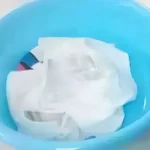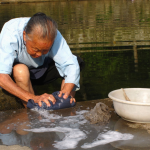The difference between dry cleaning and washing

The method of fabric washing has been used for thousands of years, while the invention of dry cleaning technology is only a hundred years old. Before the invention of dry cleaning, all fabrics were washed with water. In fact, there is no advanced or backward difference between dry cleaning and water washing, and there is no distinction between high and low grades.
Compared with water washing, dry cleaning uses different washing solvents, different types of soil removal, and different types of clothing.
The difference between dry cleaning and water washing is that the former uses a solvent to dry clean clothes; the latter is a more environmentally friendly way to clean clothes. The specific differences are as follows:
- From the environmental aspect
Dry cleaning requires a dry cleaning machine and needs to be treated with a solvent. After washing the clothes, there will be residual oil stains containing tetrachloroethylene, which are volatile and pollute the air.
Washing is mainly water, which is a more environmentally friendly method. Nowadays, green laundry is advocated, and water washing, which is recognized as ecological washing, is the most environmentally friendly compared to dry cleaning.
- In essence
The advantage of dry cleaning is that it can wash some garments that cannot be washed. Mainly reflected in the clothes after dry cleaning, no shrinkage, no fading, no foaming, no deformation. For example, some protein fibers and viscose fibers may shrink after washing.
The scope of application of washing is divided from clothing fibers: cotton, hemp, and synthetic fiber fabrics. For example, cotton fiber is a fiber bundle fiber, which has a strong adsorption capacity for stains, and because of its relatively small shrinkage, it can be washed with water.
Copyright 2020, Hebei Guansheng Technology Co.Ltd All Rights Reserved
 Hebei Guangsheng Technology Co.Ltd
Hebei Guangsheng Technology Co.Ltd
 Hebei Guangsheng Technology Co.Ltd
Hebei Guangsheng Technology Co.Ltd






